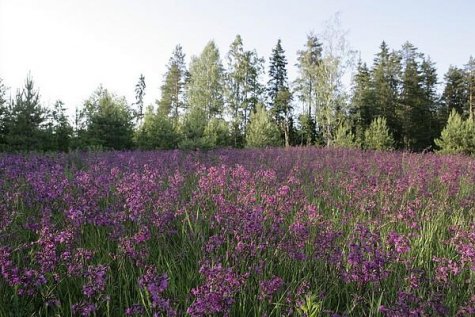Catchfly
Photo: Arne Ader
Translation: Liis
Catchfly flowers.
|
Sticky catchfly |
Harilik tõrvalill | Lychnis viscaria |
It is the tallest of the native Estonian species in the carnation or pink family (Caryophyllaceae), and with the largest flowers. It grows in dryish meadows and slopes. Old times with intense agriculture suited the catchfly better: shrubs taking over open land and lessening use of pastures has decreased its habitats.
A field of catchfly flowers is beautiful and attracts summertime flower arrangers. But the gluey, often dark stalks can stick to the palms of the picker. With this "tar” the plant protects its flowers against ants and aphids, whose mutual relationship is well known.
The flowers are very rich in nectar but only insects with very long sucking organs (proboscises) can reach it – bumblebees, butterflies ... Even during warm and light summer nights insects are busy where the catchfly flowers.
.









